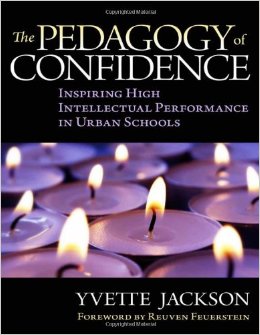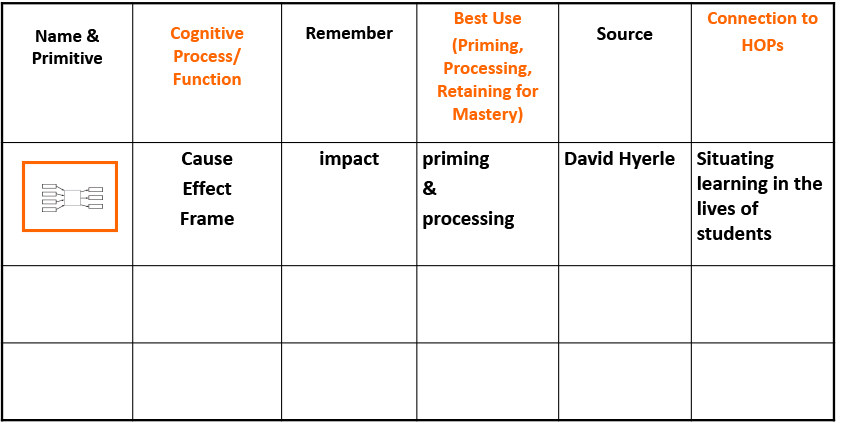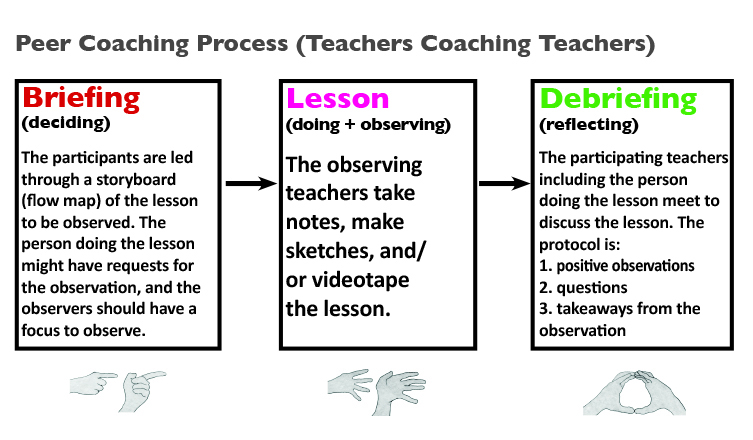Structures
 See The Pedagogy of Confidence® Action Guide online for many of the structures used by National Urban Alliance with educators and students. The structures are part of the NUA approach that includes hands on modeling by NUA mentors with students in the classroom — in person and virtually. The online structures include both how to do, and the ‘why’. Many include brief video examples explaining and modeling, including with students.
See The Pedagogy of Confidence® Action Guide online for many of the structures used by National Urban Alliance with educators and students. The structures are part of the NUA approach that includes hands on modeling by NUA mentors with students in the classroom — in person and virtually. The online structures include both how to do, and the ‘why’. Many include brief video examples explaining and modeling, including with students.
The Pedagogy of Confidence Leadership Action Guide is based on many years of research and collaborations with Reuven Feuerstein, with National Urban Alliance (NUA), with many other organizations and colleagues focusing on equity consciousness in the spirit of belief and belonging for all students and educators. The Pedagogy of Confidence is focused on recognizing and amplifying the strengths underserved students.
The goal of this action guide is to cultivate and sustain equity consciousness through The Pedagogy of Confidence. The Pedagogy of Confidence engenders robust communities of belonging in which students are gifted with High Operational Practices to inspire students’ engagement and elicit their innate potential for high intellectual performances, self-determination, and personal contribution.
https://pedagogyofconfidence.net
Categories include:
Pedagogical Flow Map
 The Pedagogical Flow Map (PFM) is the structure that creates a framework for translating the Pedagogy of Confidence into lesson or unit designs. The PFM addresses the:
The Pedagogical Flow Map (PFM) is the structure that creates a framework for translating the Pedagogy of Confidence into lesson or unit designs. The PFM addresses the:
- what — the standards of the disciplines and content acquisition
- how — engagement and enhancement of reading expertise
The PFM ensures alignment with the High Operational Practices of the Pedagogy of Confidence. This means that instruction will be designed around the development of cognition that leads to high operational performance.
Read and Learn more on the Pedagogical Flow Map on The Pedagogy of Confidence Action Guide website.
Reflective Notebook
Strategy Review Chart
 A Strategy for Capturing Information About Pedagogical Tools
A Strategy for Capturing Information About Pedagogical Tools
This strategy provides a frame in which to capture the finer points of NUA strategies, protocols and practices. Rather than providing a pre-printed list of best practices, teachers are engaged in “building” the SRC in the context in which the strategies are introduced.
Read and Learn more on the Strategy Review Chart on The Pedagogy of Confidence Action Guide website.
-
Critical Components
- Name & Primitive: Add the name of the strategy, protocol or practice and a drawing (if applicable) of the same in its base form.
- Cognitive Process/Function: Consider the kind of thinking students are engaged in when using the strategy, protocol or practice; the purpose for using the strategy, protocol or practice.
- Remember: Identify 3-4 finer points to keep in mind when using the strategy, protocol or practice to ensure student/teacher success when using the strategy.
- Best Use: Decide upon which of the Three Phases of Learning are Priming-Getting ready to learn; Processing-Unpacking meaning or Retaining for Understanding-Holding on to learning for long-term memory is best suited for the strategy, protocol or practice.
- Source: The author/developer of the strategy, protocol or practice
- Connection to HOPs: Identify which of the High Operational Practices of The Pedagogy of Confidence is/are supported when using the strategy, protocol or practice.
Read and Learn more on the Strategy Review Chart on The Pedagogy of Confidence Action Guide website.
Peer to Peer Coaching
 The Peer to Peer Coaching model focuses on educators regularly observing each other to learn, understand, and improve their pedagogy (teaching methods with the how of teaching). This model works best in small groups with a minimum of three – one teacher demonstrating a lesson while two other teachers observe. The observed lessons are generally in the 15-30 minute range to provide a focus on particular teaching methods. The model includes a briefing, lesson and debriefing. It is recommended to group teachers from different grade levels and subject areas so they are focused on the teaching methods and not only content.
The Peer to Peer Coaching model focuses on educators regularly observing each other to learn, understand, and improve their pedagogy (teaching methods with the how of teaching). This model works best in small groups with a minimum of three – one teacher demonstrating a lesson while two other teachers observe. The observed lessons are generally in the 15-30 minute range to provide a focus on particular teaching methods. The model includes a briefing, lesson and debriefing. It is recommended to group teachers from different grade levels and subject areas so they are focused on the teaching methods and not only content.
This model is a multi-directional process: everyone has gifts and skills to share and learn from one another. This differentiated process allows everyone to progress at a rate consistent with their skills. The model is an ongoing process for both new and experienced teachers.
Ongoing Development: Teachers regularly participant with the Peer to Peer Coaching model throughout the school year. Weekly or every other week would be recommended.
Read and Learn more on the Peer to Peer Coaching Model on The Pedagogy of Confidence Action Guide website.
Reflection Models
Introduction
 Reflection is an important part of the structure of the Pedagogy of Confidence, with both students and educators. It is an important element of the Pedagogical Flow Map for both students and educators growth.
Reflection is an important part of the structure of the Pedagogy of Confidence, with both students and educators. It is an important element of the Pedagogical Flow Map for both students and educators growth.
Teacher (Self) Reflection. This is the point in the lesson when the teacher confirms that students are ready to independently read the text and engage in independent or group activities. The teacher makes this judgment by reflecting with the students about the learning experience thus far and the features that have been built into the unit to support the students’ learning success. The shared model of self-reflection offers the opportunity for dialogical thinking (hearing the teacher’s perspectives) and provides additional entry points for further clarification or for development of new perspectives and insights.
Student Reflection. Student reflection may involve a self- or peer-check on understanding or a judgment about being ready for an assessment. In addition, students may be invited to think about personal references they could make and what they have learned about themselves as learners after concluding the unit study. This PFM step can readily be combined with others. For example, students can be invited to reflect on what they have learned when they are confirming their understanding of the central concept or theme of the lesson.
Jackson, Yvette. The Pedagogy of Confidence: Inspiring High Intellectual Performance in Urban Schools (p. 167). Teachers College Press. Kindle Edition.
There are many ways one can be reflective, and the ideas below are suggested as a thoughtful ideas to both have a method to be reflective that helps students and educators to think deeply forward as a reflective community. It is recommended to keep these ideas in a location (e.g. a composition book or online portfolio book) to see progression, with access to look back at entries.
On this page there are multiple ways of reflection including steps and examples for:
On this page there are multiple ways of reflection including steps and examples for:
- Haiku
- Metaphors
- Similes
- Symbols
- A Visual Map
- Acting Out
Read and Learn more on the Reflection Models on The Pedagogy of Confidence Action Guide website.
Also look at the Learning Modules that bring the above structures into action while building upon understanding The Pedagogy of Confidence. See The Pedagogy of Confidence® Action Guide online.
